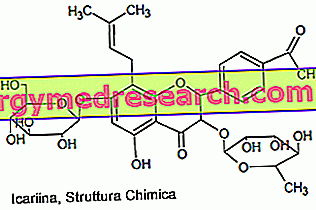The choice of physical activity best suited to weight loss
The area of physical effort that determines the prevalent use of fatty acids for energy purposes is between 65 and 75% of the maximum heart rate, corresponding to 50-60% of the VO2 max. However it is not possible to give a specific pulse value since the maximum heart rate varies from subject to subject.
A FEW OF CLARITY ON THE CONSUMPTION OF FATS
Following are some algorithms for estimating energy expenditure and lipid consumption in typical aerobic disciplines such as running and walking.
| STROKE |
| Energy expenditure = 0.9 x km traveled x kg of body weight Fat consumption in g: (kg body weight x km traveled) / 20 |
| WALK |
| Energy expenditure : 0.45 -0.50 per km traveled x kg of body weight Fat consumption in g: (kg of body weight x km traveled) / 35 |
EXAMPLE
Calculate the energy expenditure and fat consumption in grams of a subject of 75 kg that runs 10 km running at a speed of 10 km / h (so about an hour) or walking at 5 km / h (so about two hours).
STROKE: energy cost = 0.9 x 10 x 75 = 675 Kcal
Grams of fat consumed: (75 x 10) / 20 = 37.5g
WALK: energy expenditure: 0.5 x 10 x 75 = 375 Kcal
G rammi of fat consumed: (75 x 10) / 35 = 21g
In walking, fat consumption is higher in percentage terms, but since calorie consumption is practically half, the fat grams consumed are less than running over the same distance.
Lose weight, intended as a metabolic consumption of fatty acids is really difficult: take into account that a world-class athlete who runs a marathon oxidises about 100 g of fat (0.5 - 0.7 g / min as a maximum) (data from Poehman et al. 1991 ; Brehm BA and Gutin.B, 1986) while a high-level walker competing in the 50 km march consumes approximately 200-220 g of lipids (about 0.91-1 g / min as a maximum) (O'Biren data et coll.). And again: a well trained subject weighing about 70 kg, who travels 100 km by bicycle on level ground and at almost constant speed of 30 km / h "burns" about 30 g of fat (E. Arcelli).
One speaks therefore of "aerobic" athletes par excellence, programmed for prolonged efforts that last for hours, with daily training, genetic predisposition, "optimized" red fibers, active mitochondria, etc.
In fact, the use of fatty acids for energy purposes does not occur uniformly for everyone: if for those subjects who are aerobically very efficient the metabolism of fatty acids takes place from the first minutes of the run (5-10 minutes), for those less trained l the use of fats takes place at proportionately longer times, depending on the level of training.
Beginners, who are not efficient from a metabolic point of view, may also not use fatty acids during an aerobic session lasting 30-40 minutes because the body is not yet able to optimize energy reserves. The body, in fact, tends to use carbohydrates even when it runs slowly because they require less oxygen than fatty acids. |
And Mrs. Maria, who trains 2 or 3 times a week doing a few dozen minutes on a bike, rug, step? How many grams of fat do you think you burn ?! That's why in the gym, with the classic approach it is so difficult to lose weight and the results of the customers from this point of view are so poor.
To lose weight, it is therefore advisable to go through the increase in lean mass.
RELATED ARTICLES: The calorie consumption of the race



